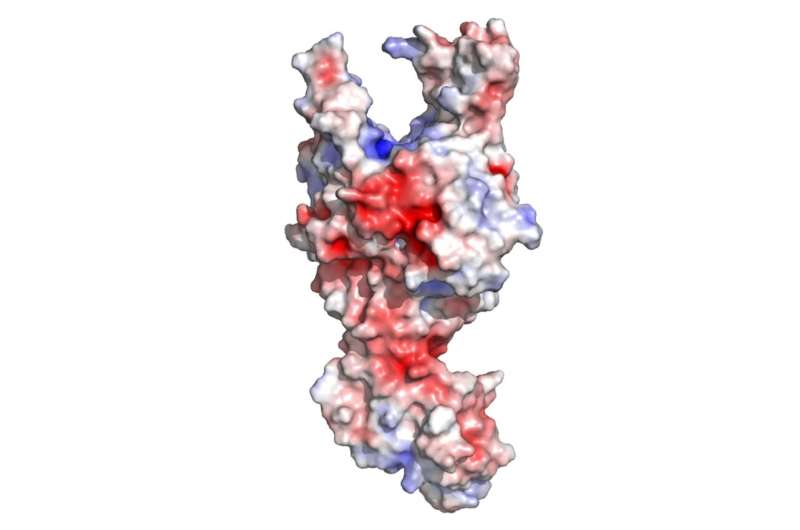This article has been reviewed according to Science X's editorial process and policies. Editors have highlighted the following attributes while ensuring the content's credibility:
fact-checked
peer-reviewed publication
trusted source
proofread
New cell-killing toxin discovered in an environmental pathogen

Using the Australian Synchrotron researchers at the La Trobe Institute for Molecular Science (LIMS) and the French National Research Institute for Agriculture, Food and Environment were able to see the molecular structure of the Ssp toxin from the bacterial pathogen Serratia marcescens. Researchers estimate that the structure of a new toxin class has not been determined in almost a decade.
Dr. Jason Paxman, one of two lead researchers, said that Ssp is a new type of toxin and its design is quite unlike any others previously known to science.
"Pretend you've never seen a syringe before, but someone explains what a syringe does—injects substances into human tissue, then all of a sudden you have a picture of a syringe, and you see the plunger and needle —that's what this what we've done here," Dr. Paxman said.
"So now that we actually have the structure of the toxin, we can see how it injects itself into cells to cause disease, and then start designing ways to stop it."
The environmental pathogen S. marcescens is remarkable in that apart from causing many human infections including respiratory diseases, as well as bloodstream and urinary tract infections, this pathogen is known to cause infections in livestock, insects and plants. In contrast, other pathogens have a more limited host range.
With its wide host range, Serratia's major toxin Ssp is able to enter and kill a wide range of living cells. Cell death caused by Ssp is responsible for the sickness associated with S. marcescens infections.
Professor Begoña Heras, Head of the Structural Biology and Bacterial Pathogenesis laboratory at LIMS, said by understanding what Ssp looks like we can now develop targeted inhibitors.
"These inhibitors or antimicrobials may be developed to bind to the part of Ssp responsible for injecting itself into cells," Professor Heras said.
"Serratia has quite high levels of antibiotic resistance and can cause infections in a wide array of hosts, from humans to insects."
New inhibitors of the Ssp toxin, could be used to "disarm" S. marcescens and reduce the sickness during infections. This would circumvent the use of antibiotics.
The study is published in the journal Nature Communications.
More information: Lilian Hor et al, Crystal structure of a subtilisin-like autotransporter passenger domain reveals insights into its cytotoxic function, Nature Communications (2023). DOI: 10.1038/s41467-023-36719-2
Journal information: Nature Communications
Provided by La Trobe University


















